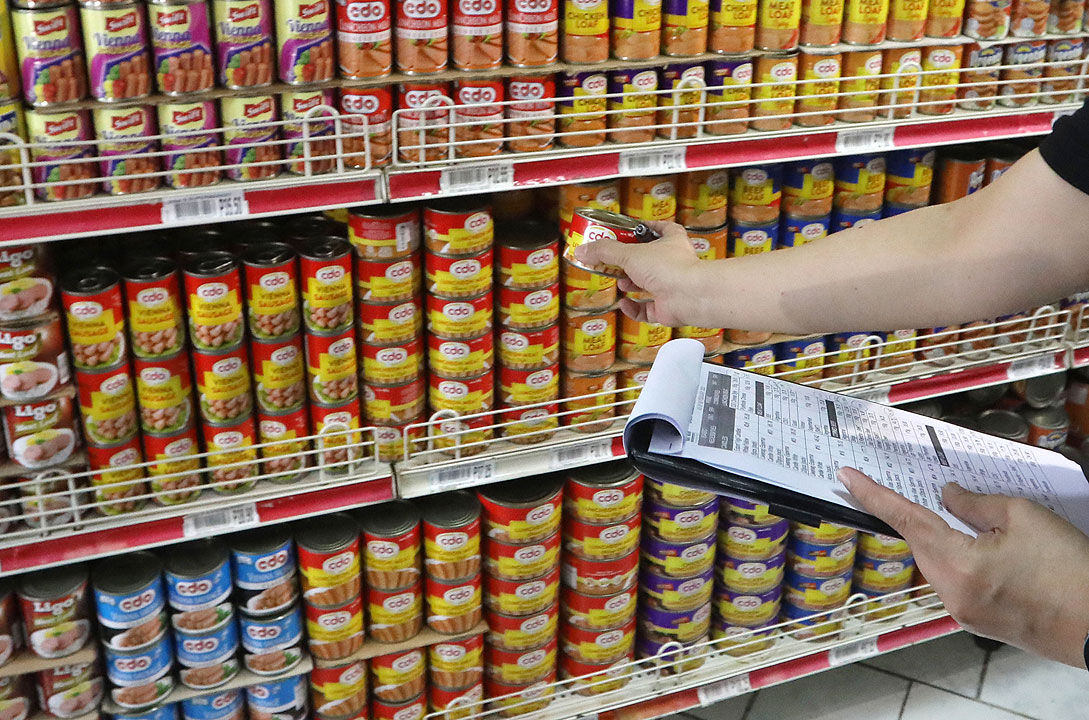Economists raise inflation forecasts

PRIVATE SECTOR economists raised their inflation outlook for this year through 2025 after the faster-than-expected January print, with most economists expecting the Bangko Sentral ng Pilipinas (BSP) to begin trimming rates only next year.
Based on the results of the BSP’s survey of private economists in February, the average inflation forecast of analysts for 2023 jumped to 6% from just 4.9% in the January survey.
Economists’ mean inflation forecast for 2024 and 2025 also climbed to 4% (from 3.7% previously) and 4.1% (from 3.6%).
“Analysts expect inflation to remain above the upper-end of the government’s target range in 2023 given the higher-than-expected January 2023 inflation print, as well as due to demand-side price pressures and supply shocks,” the BSP said in its latest Monetary Policy Report.
Headline inflation accelerated to a fresh 14-year high of 8.7% in January, from 8.1% in December. January also marked the 10th consecutive month inflation was above the BSP’s 2-4% target range.
“Risks to the inflation outlook remain tilted to the upside due to the continued recovery of domestic demand, alongside high prices of goods and services due mainly to supply-related concerns and second-round effects,” the central bank said.
“The BSP’s monetary policy actions are expected to cool down inflation, especially in the second half of 2023,” it added.
Last week, the Monetary Board raised borrowing costs by another 50 basis points (bps) to tame inflation, bringing the key rate to 6%, the highest in nearly 16 years or since May 2007 when it stood at 7.5%.
The central bank on Thursday raised its average inflation forecast for 2023 to 6.1%, from 4.5% previously. This is beyond the BSP’s 2-4% target range, and faster than the 5.8% full-year inflation in 2022.
The BSP also hiked its 2024 inflation projection to 3.1% from 2.8%.
“The upside risks to inflation include high prices of goods and services, including oil and food, due to supply-related concerns attributed mainly to weather disturbances and geopolitical tensions such as the ongoing Russia-Ukraine war,” the BSP said.
Some analysts also cited the recovery of private consumption and government spending, peso depreciation, rising inflation expectations as other upside risks to the outlook.
Data from the Philippine Statistics Authority (PSA) showed private consumption expanded by 7% in the fourth quarter last year, slightly slower than 8% in the third quarter and 7.5% a year earlier. For 2022, household consumption rose by 8.3% from the year prior.
Government spending also rose by 3.3%, better than 0.8% in the third quarter but slower than 7.8% a year earlier. State spending growth eased to 5% in 2022 from 7.1% a year earlier.
The BSP noted that higher transport fares are a likely source of second-round effects from rising oil prices, citing the recent moves to hike fares for the Light Rail Transit (LRT) Line 1 and 2. There are also proposals to raise fares for the Metro Rail Transit (MRT) Line 3.
“Meanwhile, only a handful of analysts mentioned possible downside risks to inflation such as base effects; heightened uncertainty on the recovery of the global economy; slow reopening of China; and existing non-monetary measures by the National Government that are expected to help boost food supply and temper domestic prices,” the BSP said.
SLIM PROBABILITY
Based on the probability distribution of the forecasts provided by 18 out of 24 analysts, the BSP said there is a 97% chance that inflation will exceed the 2-4% target range. There is only a slim or 1.9% probability (from 10.3% previously) that average inflation will settle within the target band.
For 2024, the probability that inflation will fall within the target band declined to 57.9% (from 65.3%).
For 2025, there is a 63.7% chance (from 73.4%) that inflation will settle well within the target band, the BSP said.
Meanwhile, most analysts anticipate the Monetary Board to continue tightening policy rates by 25 bps to 250 bps this year.
Analysts only expect the BSP to start trimming rates by about 25 bps to 250 bps in 2024, before further cutting rates by up to 100 bps in 2025.
There were 24 respondents in the BSP’s survey of private sector economists this month. The survey was conducted from Feb. 7 to Feb. 14.
The BSP measures inflation expectations by analyzing the inflation forecasts of households, business managers, and private sector economists, as well as the reasons they cite to support their individual forecasts.
According to the BSP’s consumer expectations survey in the fourth quarter of 2022, more households expect inflation to accelerate in the first quarter 2023 (17.6%), and the next 12 months (9.5%).
The central bank also keeps track of business expectations through its quarterly survey. The results showed that nearly 90% of business managers from the industry, construction, services, and retail trade sectors expect inflation to exceed the 2-4% target this quarter, and the next 12 months.
In a study last year, the BSP said that private sector economists have more accurate forecasts than firms and households. — Keisha B. Ta-asan



